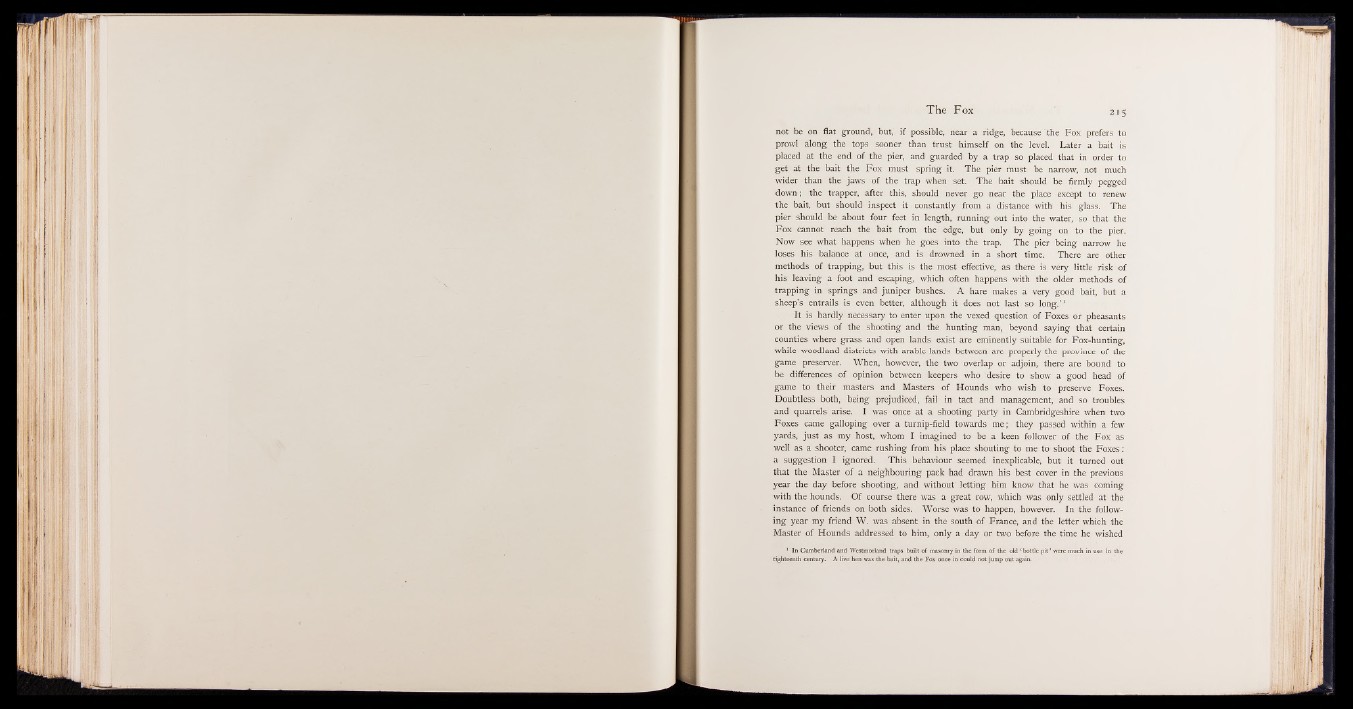
not be on flat ground, but, if possible, near a ridge, because the Fox prefers to
prowl along the tops sooner than trust himself on the level. Later a bait is
placed at the end of the pier, and guarded by a trap so placed that in order to
get at the bait the Fox must spring it. The pier must be narrow, not much
wider than the jaws of the trap when set. The bait should be firmly pegged
down; the trapper, after this, should never go near the place except to renew
the bait, but should inspect i t . constantly from a distance with his glass. The
pier should be about four feet in length, running out into the water, so that the
Fox cannot reach the bait from the edge, but only by going on to the pier.
Now see what happens when he goes into the trap. The pier being narrow he
loses his balance at once, and is drowned in a short time. There are other
methods of trapping, but this is the most effective, as there is very little risk of
his leaving a foot and escaping, which often happens with the older methods of
trapping in springs and juniper bushes. A hare makes a very good bait, but a
sheep’s entrails is even better, although it does not last so long.’ 1
It is hardly necessary to enter upon the vexed question of Foxes or pheasants
or the views of the shooting and the hunting man, beyond saying that certain
counties where grass and open lands exist are eminently suitable for Fox-hunting,
while woodland districts with arable lands between are properly the province of the
game preserver. When, however, the two overlap or adjoin, there are bound to
be differences of opinion between keepers who desire to show a good head of
game to their masters and Masters of Hounds who wish to preserve Foxes,
Doubtless both, being prejudiced, fail in tact and management, and so troubles
and quarrels arise. I was once at a shooting party in Cambridgeshire when two
Foxes came galloping over a turnip-field towards me ; they passed within a few
yards, just as my host, whom I imagined to be a keen follower of the Fox as
well as a shooter, came rushing from his place shouting to me to shoot the Foxes:
a suggestion I ignored. This behaviour seemed inexplicable, but it turned out
that the Master of a neighbouring pack had drawn his best cover in the previous
year the day before shooting, and without letting him know that he was coming
with the hounds. Of course there was a great row, which was only settled at the
instance of friends on both sides. Worse was to happen, however. In the following
year my friend W. was absent in the south of France, and the letter which the
Master of Hounds addressed to him, only , a day or two before the time he wished
1 In Cumberland and Westmorland traps built of masonry in the form of the old ‘ bottle pit ’ were much in use in the
eighteenth century. A live hen was the bait, and the Fox once in could not jump out again.